
The Small Hermitage is an architectural monument located in the central part of St. Petersburg and is part of the State Hermitage Museum complex.
According to the idea, the building was supposed to serve as a so-called "Greenhouse House" with a Winter Garden with exotic plants, birds and small animals lived.
The building was built in stages, at the request of the Empress Catherine II, next to the grand imperial residence-the Winter Palace:
- in 1764-1766, the architect Yuri Matveyevich Felten built a two-story southern building, which today faces Millionnaya Street (near the Palace Square);
- In 1767-1769, the French architect Jean-Baptiste-Michel Vallin-Delamotte built the second building (pavilion), located on the banks of the Neva River, which contained: the state hall, several living rooms and a greenhouse for a secluded rest of the Empress Catherine II.
Also in this (northern) building, Catherine II organized entertainment evenings with games and performances - "small Hermitages" for a narrow circle of her close circle.
It was for this building that the name "Hermitage" (from the French "ermitage" - a place of solitude) was first fixed.
The Small Hermitage is connected to the neighboring buildings of the State Hermitage Complex (the Winter Palace, The New Hermitage and the Big Old Hermitage) with covered archways.
In the appearance of the southern building, the features of the outgoing Baroque and the emerging classicism are organically combined. The slightly rounded shape of the building gives it grace.
Bas-relief columns with capitals supporting visually seemingly light and weightless balconies at the level of the second floor and a relief attic add to the grandeur of the building.
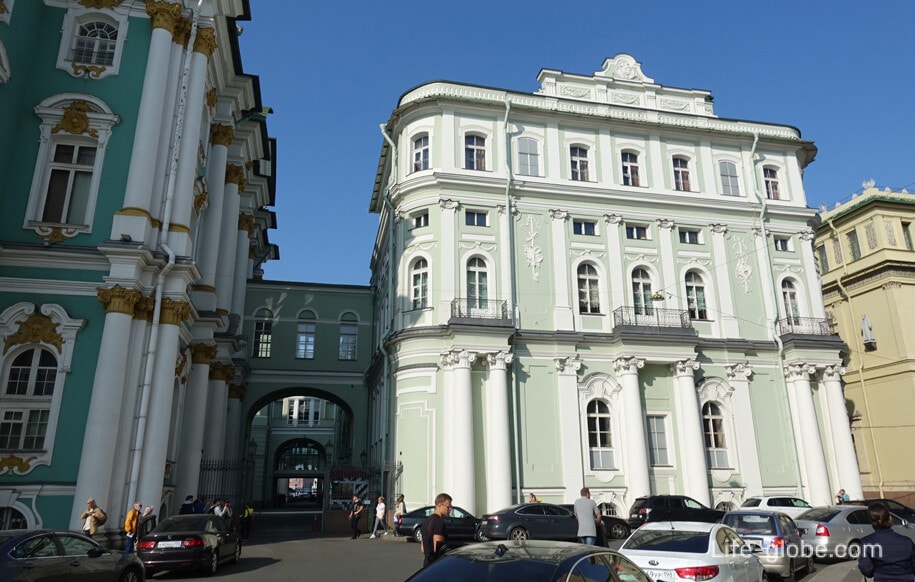
The northern building is decorated in the style of early classicism and differs from the southern one in more strict proportions, which are commensurate with the architectural features of the Winter Palace located next to it (on the right).
In the appearance of this building of the Small Hermitage, the attic with a sculptural group and the Corinthian colonnade adorning the second tier of the facade are particularly distinguished. On both sides of the colonnade are marble statues of Flora and Pomona.

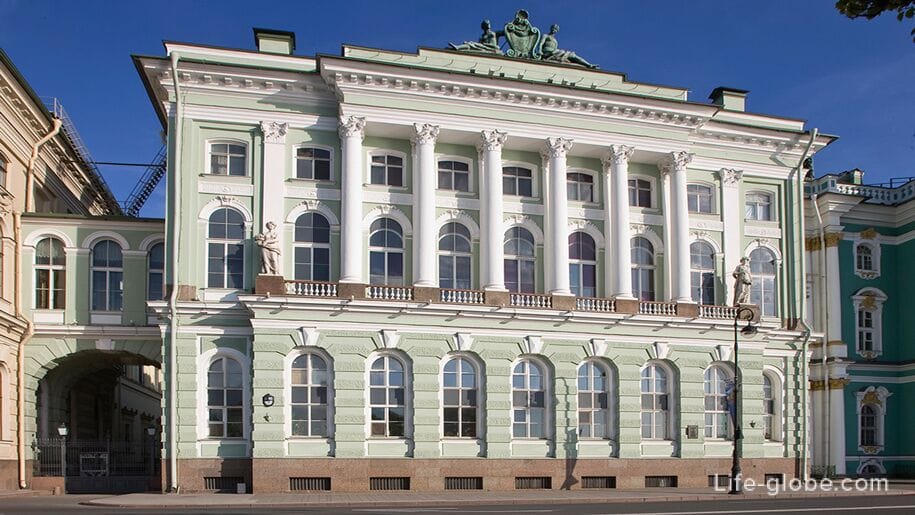
The northern and southern buildings of the Small Hermitage are connected by a Hanging Garden.
The garden is located on the second floor level, above the premises of the former stables and the arena, and occupies the space between the galleries connecting the North and South pavilions of the Small Hermitage. The connecting galleries previously housed the art collections of Catherine II, which marked the beginning of the collections of the imperial museum.
During the siege of Leningrad, vegetables were grown in the Hanging Garden.
Today, the garden contains flower beds, a fountain and several sculptures, including "Juno", "America" and "Painting". The sculptures in the garden today are copies made by direct copying from the originals and cast from polymer concrete, while the originals are kept in the storerooms of the Hermitage.
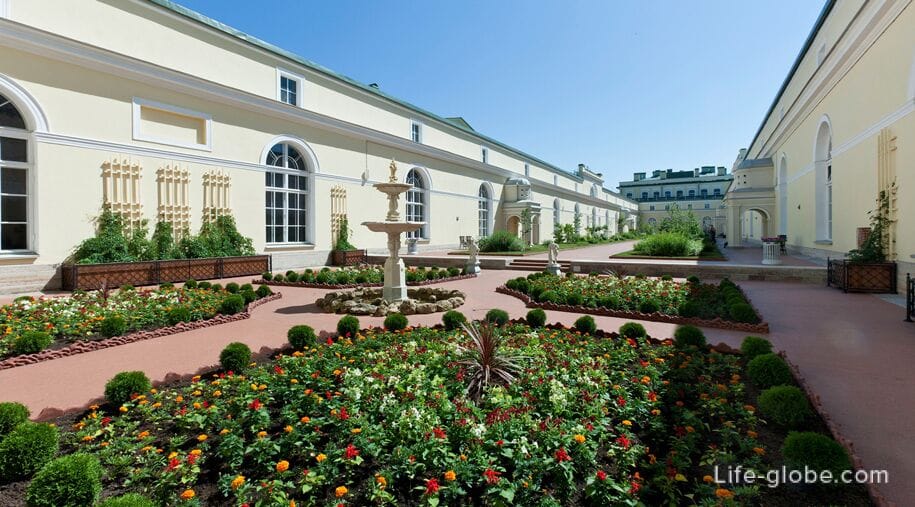
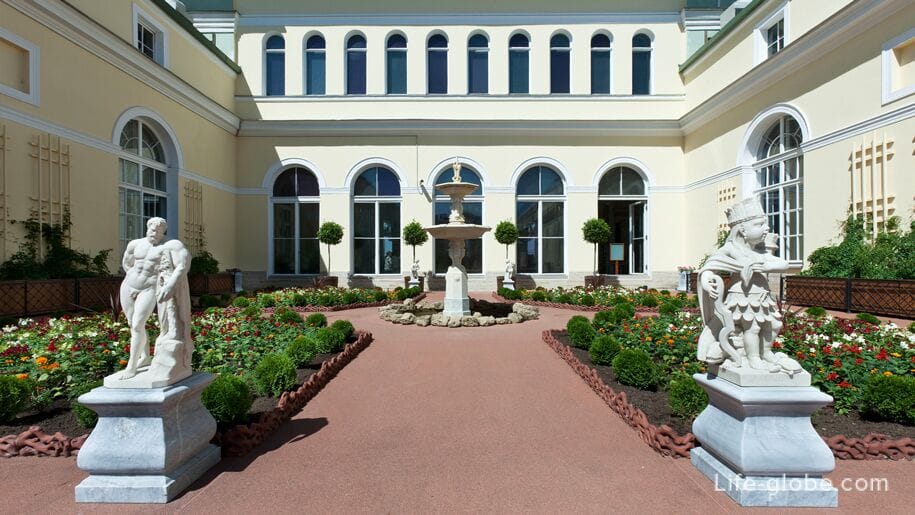
In the halls of the small Hermitage there are expositions of painting and applied art of Western Europe.
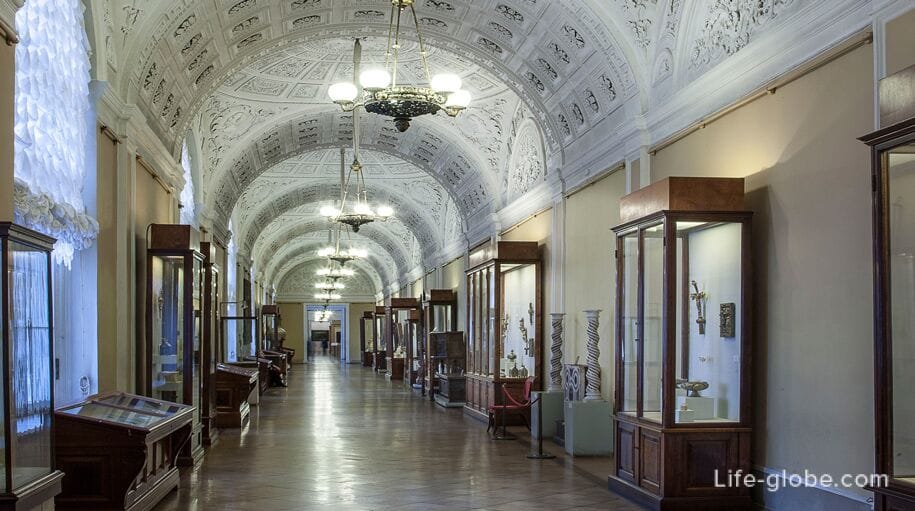
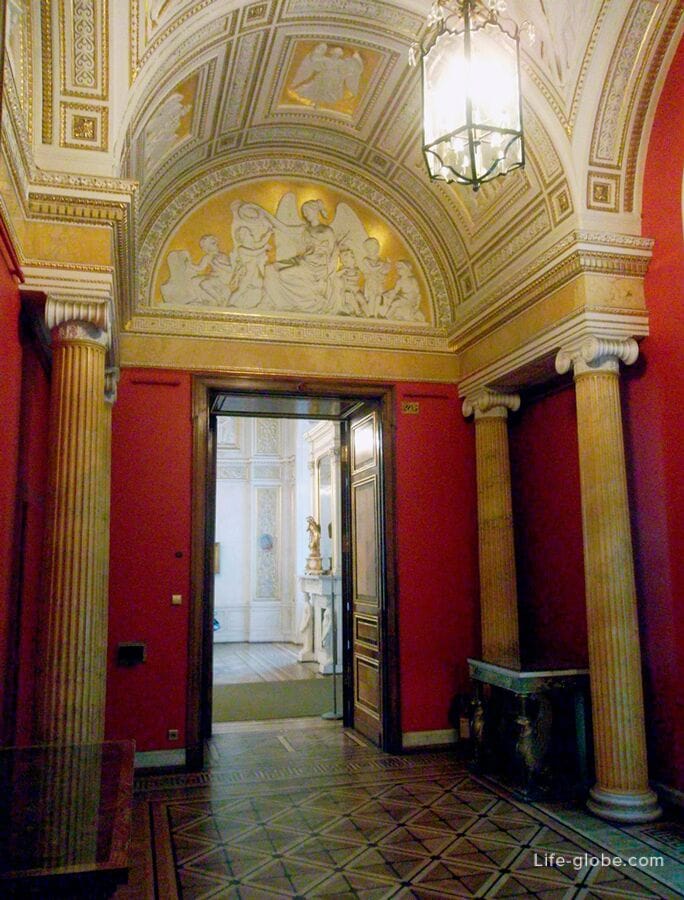
In the magnificent Pavilion Hall, created in the 1850s by A. I. Stackenschneider, there is the famous Peacock clock, made in London in the 1770s in the workshop of the English mechanic James Cox and master Frederick Urey.

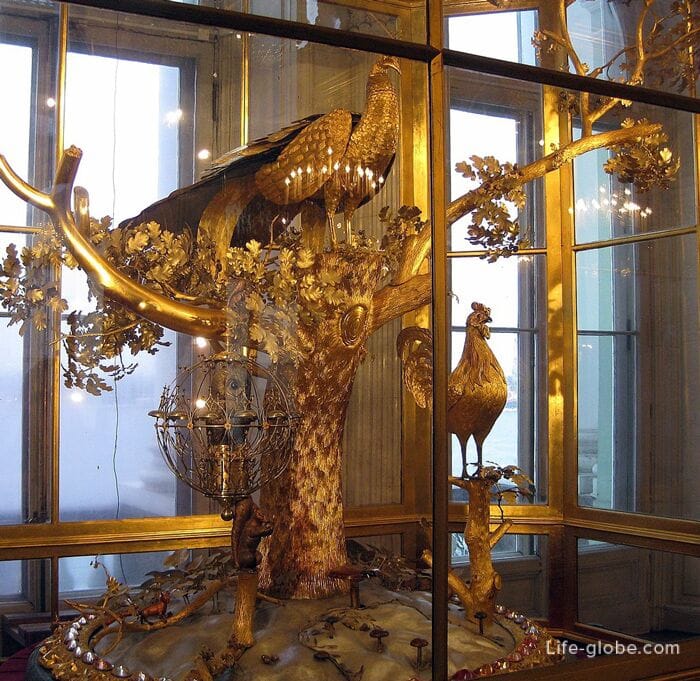
The Small Hermitage is part of the State Hermitage Museum and is part of the main museum complex.
The Small Hermitage occupies a block between the Palace Embankment and Millionnaya Street.
Website of the State HermitageMuseum: hermitagemuseum.
The nearest metrostations are : "Admiralteiskaya" (800 meters), "Nevsky Prospekt" (1 kilometer), "Gostiny Dvor" (1.3 km).
Ground stop: "Palace Square" (300 meters). Buses: 7, 10, 24, 191, trolleybuses: 1, 7, 10, 11.
The State Hermitage Museum has an official 5-star hotel with an exquisite interior of the luxury of Tsarist Russia, which is located in a quiet part of the historical center of St. Petersburg in a building built in the mid-19th century.
At the hotel: boutique restaurant, restaurant, lobby bar, fitness center, spa and wellness center and free Wi-Fi.
The rooms and suites are decorated with elegant furniture designed by Florentine woodworkers. Each room here will provide you with a flat-screen TV, a minibar and a private bathroom with Italian and Greek marble. Bathrobes are also provided.
Breakfast can be included in the room rate. Link to the hotel
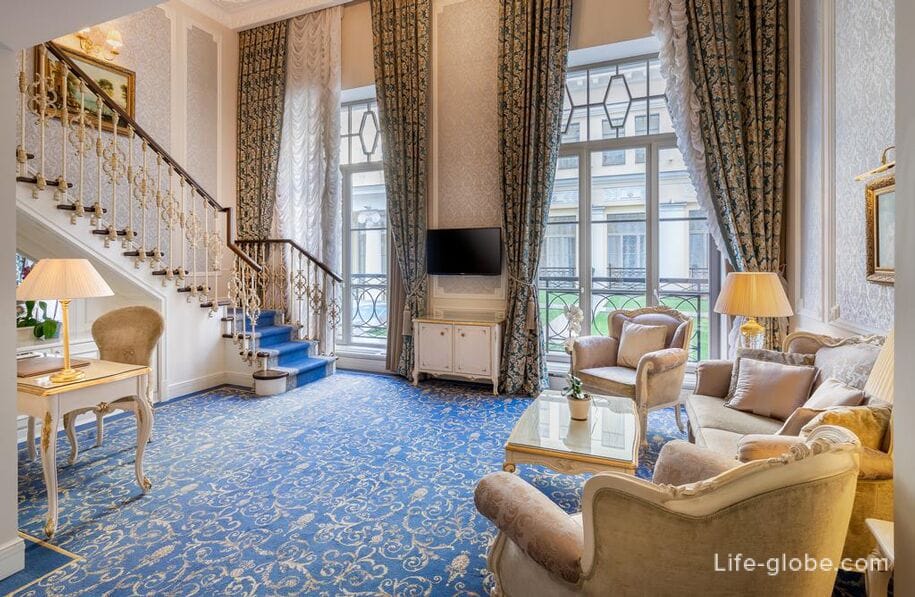
All accommodation facilities in St. Petersburg, including in the city center and more remote from it, can be viewed and booked here